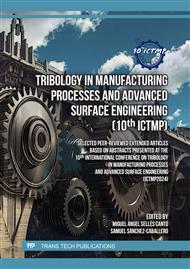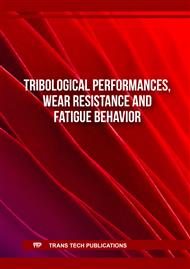p.3
p.11
p.19
p.29
p.39
p.45
p.53
p.61
p.69
Image-Based Machine Learning of In Situ Captured Images of Die-Workpiece Interface in Forging
Abstract:
The lubricant thickness in cold forging was estimated by machine learning of the in situ captured images of the die–workpiece contact interface. The images were in situ captured by a high-speed camera from the backside of the transparent glass die during forging of commercially pure aluminum workpiece. On the other hand, the images of the lubricated workpiece were individually captured as training images for random forest with classification. The classification accuracy of the lubricant thickness was confirmed to be approximately 75% (classification ability: 5–10 μm in lubricant thickness) in the training images with 22,500 px (50 px/mm). The in situ captured images of the die–workpiece contact interface during forging were classified by random forest using the training images. The estimated lubricant thickness of the in situ captured image almost agreed with the lubricant thickness estimated from the mean brightness value of the in situ captured image.
Info:
Periodical:
Pages:
39-43
Citation:
Online since:
March 2025
Authors:
Keywords:
Price:
Сopyright:
© 2025 Trans Tech Publications Ltd. All Rights Reserved
Share:
Citation:



